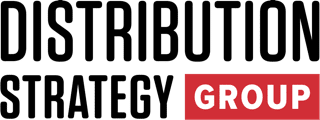For too many distributors, inventory feels like a necessary evil—a mountain of capital tied up in parts and products that may or may not move when customers need them. But what if that perspective is costing you millions in lost opportunities and operational inefficiencies?
The most successful distributors in 2025 aren’t just managing inventory; they’re weaponizing it as their primary competitive advantage. They’re using advanced analytics and automation to transform what was once their biggest liability into their most strategic asset.
The Old Way Is Costing You More Than You Think
Traditional inventory management relies heavily on historical patterns, gut instincts, and safety stock calculations that haven’t evolved since the 1990s. This approach creates a cascade of problems: excessive carrying costs, frequent stockouts on high-demand items, and dead inventory that drains cash flow.
In my experience, introducing new technology into the inventory planning of an organization has always been a struggle. It’s the lifeblood of distribution companies, and new technology that potentially interrupts that could cause major disruption in the business. However, AI is a technology that distributors need to consider, despite these legitimate concerns about operational risk.
Consider the distributor who stocks 40,000 SKUs but generates 80% of revenue from just 8,000 of them. Without proper analytics, they’re over-investing in slow-moving inventory while underserving their most profitable customers. The result? Higher costs, lower service levels, and frustrated customers who take their business elsewhere.
Smart Distributors Are Flipping the Script
Leading distributors are now using AI-powered demand forecasting and inventory optimization tools to make data-driven decisions about what to stock, when to stock it, and where to position it. These systems analyze thousands of variables—seasonal patterns, supplier lead times, customer buying behaviors, local market conditions, and even external factors like weather and economic indicators.
The payoff is substantial. Companies implementing intelligent inventory management report 5% reductions in carrying costs while simultaneously achieving a 5% increase in fill rate and reducing emergency freight expenses. They’re holding the right inventory at the right time, maximizing service levels while minimizing working capital requirements.
Beyond Forecasting: The Strategic Inventory Advantage
But truly strategic inventory management goes beyond just predicting demand. It’s about understanding the full profit waterfall of every SKU decision. Which products drive the highest gross margins? Which customers are most sensitive to availability versus price? How do different stocking strategies impact customer lifetime value?
Distributors have long relied on veterans in forecasting roles who use ERP information combined with historical data and the invaluable insight that comes from years of experience at the company. This institutional knowledge—understanding seasonal quirks, customer behavior patterns, and supplier reliability—remains incredibly valuable. However, with today’s technological capabilities, that experience alone is no longer enough to maintain competitive advantage.
Modern inventory analytics platforms help distributors answer these questions by integrating data from multiple systems—ERP, CRM, supplier portals, and even competitive intelligence. This comprehensive view enables decisions that optimize for total profitability, not just inventory turns or fill rates.
The most sophisticated distributors are even using inventory positioning as a competitive moat. By strategically placing high-velocity items closer to key customers and using predictive analytics to anticipate demand spikes, they can offer faster delivery times and higher service levels than competitors—often at lower operational costs.
Technology Is Ready. Are You?
The tools to transform inventory from liability to assets are available today and more accessible than ever. Cloud-based inventory optimization platforms can integrate with existing ERP systems, providing actionable insights without massive IT investments. Machine learning algorithms continuously improve their accuracy as they process more data, creating a compounding advantage over time.
Many distributors hesitate to adopt these technologies, concerned about complexity or cost. But the real risk lies in maintaining the status quo while competitors gain systematic advantages in cost structure and service capabilities.
Your Next Move: Learn From the Leaders
The distributors achieving breakthrough results with strategic inventory management aren’t keeping their secrets. They’re sharing their approaches, lessons learned, and practical implementation strategies with peers who are ready to transform their operations.
This November 10-12 in Chicago, the Profit and Productivity Summit will bring together these inventory optimization pioneers alongside the technology providers and consultants who helped make their transformations possible. You’ll discover the specific tools, processes, and organizational changes that separate inventory leaders from inventory laggards.
The sessions will cover everything from demand forecasting best practices to cost-to-serve optimization, with real-world case studies from distributors who’ve already made the transition. More importantly, you’ll have direct access to the executives and experts who can help you chart your own path forward.
Don’t Let Your Inventory Hold You Back
Your inventory represents millions of dollars in working capital. The question is whether that capital is working for you or against you. The distributors who figure this out first will build sustainable competitive advantages that become harder to replicate over time.
Ready to turn your inventory into a strategic weapon? Join us at the Profit and Productivity Summit in Chicago. Register today at profitandproductivity.com and discover how the best distributors are achieving peak performance through optimization and automation.
The swiftest distributors will outperform the biggest competitors. Make sure you’re in the first group.
As Chief Operations Officer of a Distribution Strategy Group, I'm in the unique position of having helped transform distribution companies and am now collaborating with AI vendors to understand their solutions. My background in industrial distribution operations, sales process management, and continuous improvement provides a different perspective on how distributors can leverage AI to transform margin and productivity challenges into competitive advantages.

